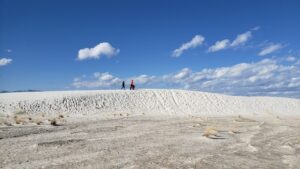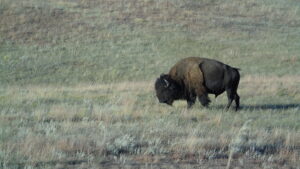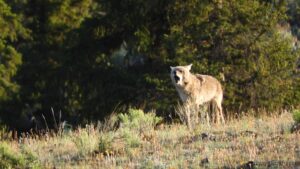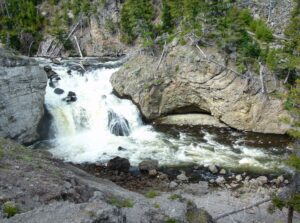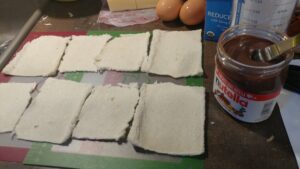 Last weekend we were planning to head to Nebraska to check out Agate Fossil Beds National Park, but our plan was altered at the last minute due to an impending Winter Storm Warning in the area. About 20 hours before departure, we
Last weekend we were planning to head to Nebraska to check out Agate Fossil Beds National Park, but our plan was altered at the last minute due to an impending Winter Storm Warning in the area. About 20 hours before departure, we  decided to head north to Theodore Roosevelt
decided to head north to Theodore Roosevelt
National Park, in Medora, North Dakota, where it was slated to be 60 degrees and sunny all weekend.
We had never been to this park before, and the boys and I had never even been to North Dakota, so we were excited for our spontaneous adventure. I had read there were bison, pronghorn, and even wild horses at this national park, so we hit the road the second we were up and moving the first day.
When we reached the outskirts of the park, which crosses over Interstate 94, we immediately saw wild (feral) horses, and stopped to snap some quick photos. Since it was late in the afternoon, our exploring had to wait until the next morning.
Saturday morning, we drove around for a bit trying to find the Southern Unit Visitor Center, as the TRNP sign was broken (meaning, it wasn’t even there), and Google Maps sent us on a leisurely drive through downtown Medora! Once we arrived, we were thrilled to discover that the main loop in the Southern Unit was indeed open, as of that Friday, which to us meant more wildlife closer to the roads than in summer!
We spent about an hour at this Visitor Center, which includes a wonderful museum dedicated to Teddy Roosevelt (one of our favorite presidents thanks to his conservation aims), his actual cabin and personal items, and a small gift shop. Our sons are huge museum fans, so we spent plenty of time looking at the artifacts and photos!
On our drive through the main loop of the Southern Unit, we scored wild horse sightings in several locations. First was along the Ridgeline Nature Trail. We actually heard them before seeing them. Although off in the distance, it was exciting to watch them grazing their way toward us.
One of the best sightings of the day was in a valley near the Old East Entrance road. We were told we had found the Little Sorrel Band, and there were three foals that were causing quite a stir among the herd. We watched them for about an hour.
 We saw various other wildlife including hawks, bison, pronghorn, songbirds, and more.
We saw various other wildlife including hawks, bison, pronghorn, songbirds, and more.
The most surprising moment of our afternoon came when we were recording a pronghorn on one side of the road who turned to run over the hill behind him. I got out to get a better photo and realized he was running off because a small band of horses were racing across the road toward him, behind our car! It was so incredible to watch the stallion guiding the pace and direction of the mares in his band.
After we went back to our campsite for some dinner, we returned to the park near dusk and looped back through the Southern Unit a little faster than we had during the day. All along the Jules creek were well over thirty horses in separate bands, stretching the length of the valley. We sat on a berm above and across the creek and watched these horses for well over an hour. Even our sons were thrilled to watch!
A few park pointers:
- Get out of your car if you can. There are several short hikes in the Southern Unit, and our sons were able to do them all, even the steep ascent to the “second highest peak” in the park.
- Go in the early or very late summer seasons. We have not been through this park in the summer, but I am sure by its proximity to the interstate and the single loop, the roads will be packed in the summertime, and the loop roads are closed in the off-season.
- 3. If you are camping, stay right in the park. We stayed in a campground in Medora in our RV, which did provide full hook-ups, even before May 1st. However, we looked at the park campground and it is beautiful, right along the Little Missouri River!
- Subscribe to our YouTube channel – horse videos coming very soon (this link will also be updated when we upload)!!

